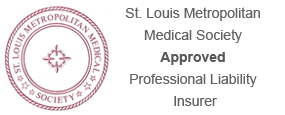“Proper planning and preparation prevents poor performance.”
-Stephen Keague
Do not wait for the patient to be in the office to understand the reason for the visit. Prior to the patient appointment the chart should be updated regarding the care the patient received from another provider or hospital, and whether there has been a change in medical conditions or medications. Review the past issues, as well as any test, scans or labs that are due. Additionally, remind the patient if you had previously requested they bring a current list of medications, track dietary intake, blood pressures or any other requests.
Reviewing and obtaining this information in advance saves on the limited amount of time the physician has allocated to the patient. Also, the patient can be reminded of both the appointment and the materials they are to provide to the physician. It also allows the patient time to ensure the accuracy of the information provided.
So, what is the best way to gather this information ahead of time?
Designate a time in advance of the appointment for the physician or a staff member to review a patient file. The time should be prior to any appointment reminder that is sent to the patient, whether by phone or electronic communication. The review of the patient records should include any instructions provided to the patient on the last visit; ordering any test indicated by protocols based on the patient condition or medications; confirming that any tests, labs or scans previously ordered are completed and included in the file; and determining whether there are any other physician or hospital records that may be relevant to the treatment.
Complete this review as well as a determination of any records, labs, studies, calendars, diaries etc. that are needed by the office. Then, plan for the visit. Communicate with the patients as to the labs, studies, or other pre-visit testing that needs to be done and schedule the patient to have those done in an adequate time to make certain the results are available for the appointment. For example, pre-visit blood draws or other lab testing saves time by having the results available during the appointment and ready for discussions. This is more efficient than waiting for those results and having to call the patient to then discuss the results and to then answer questions or repeat a discussion that already occurred in the appointment.
When communicating with the patient to schedule the pre-visit testing, the patient should be provided with the necessary pre-visit forms that will be needed for the appointment. This can include any insurance information forms, consent to contact forms, or documentation regarding pre-visit testing. Your office should also encourage the patient to fully disclose the reason for the visit and provide any questions the patient may have for the physician.
Addressing issues in advance allows for more directed conversation. It prevents the patient potentially forgetting to address an issue that was important to the patient but forgotten during the appointment. You may also consider a request form for updated information that seeks current medical conditions and treatment, any changes in medical conditions, lifestyle changes, family history, mental status, medical procedures that the patient has had since the last visit, current physicians, and other pertinent information.
Providing this to the patient in advance will reduce the stress of the patient having to rapidly fill in forms in the waiting room and will give the patient more time to provide accurate information. This allows the patient’s information to be loaded into the medical record prior to the visit. This will also allow time for the physician to review and obtain any pertinent information that is disclosed. This is especially relevant if there are changes to medications that may impact treatment.
Pre-visit planning for patients can help save time and improve patient experience, while also improving the quality of care provided and mitigating risk of treatment errors. This allows more productive use of the time for the appointment and focuses the appointment more on interaction than on time used by the physician to read records. This interaction can also provide more opportunities for the physician to discuss preventive care, screenings, exercise, and diet, or to address the patient’s concerns.

